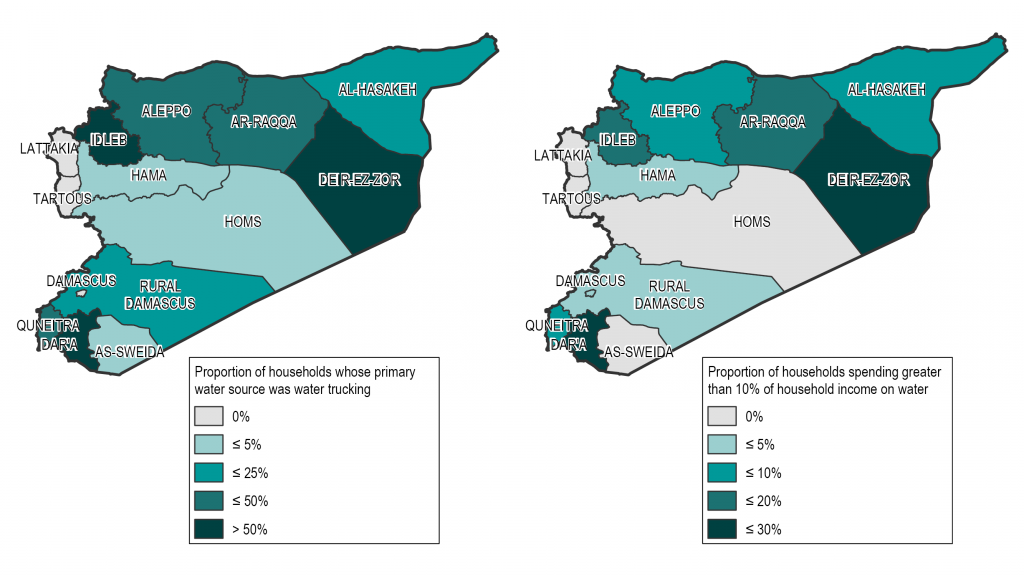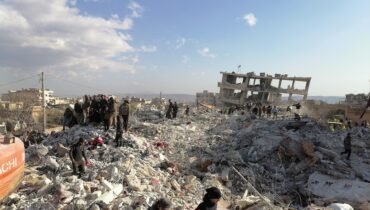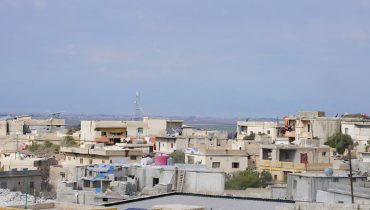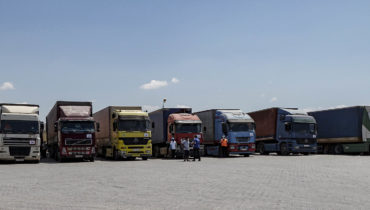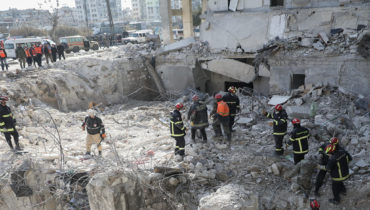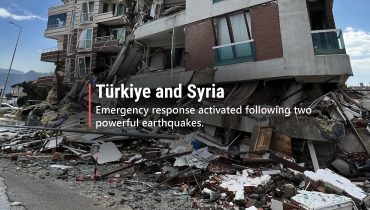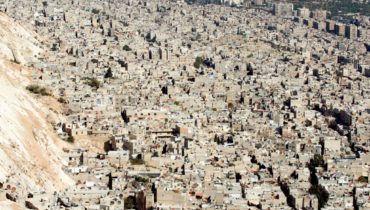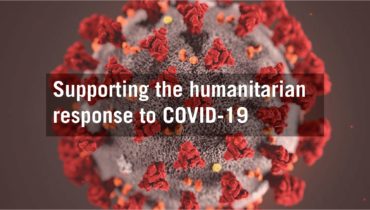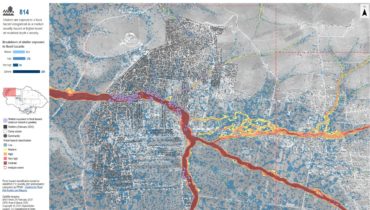Displaced Syrians face overcrowded latrines and limited access to safe drinking water – A snapshot of WASH needs and conditions in Syria
24 October 2018
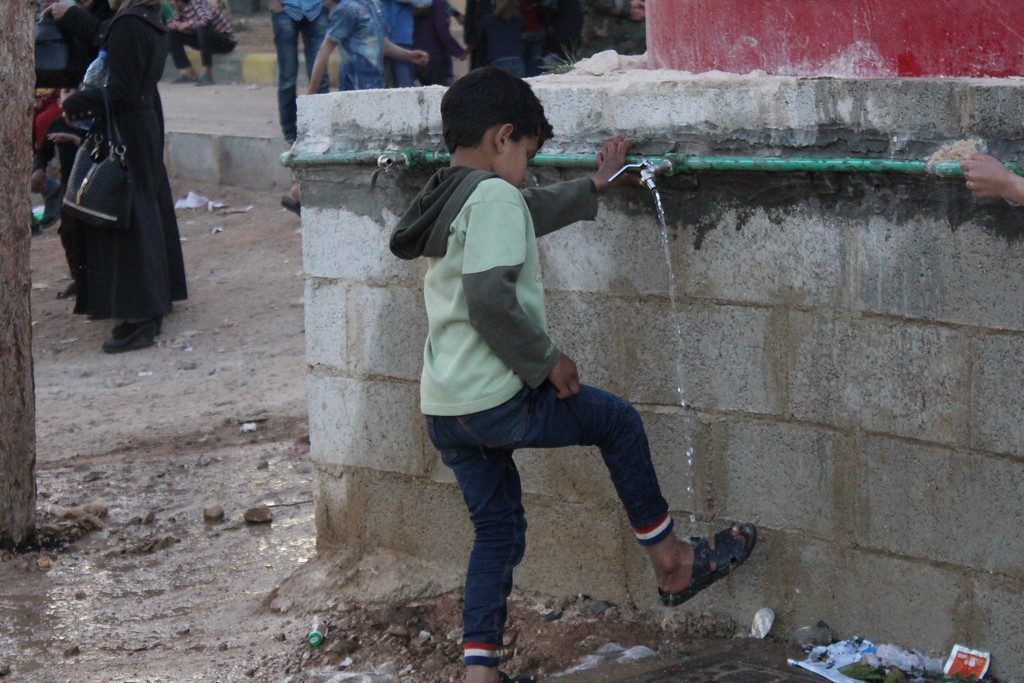
Boy washes his feet at a collective shelter for IDPs from eastern Ghouta. ©OCHA/Ghalia Seifo
Hostilities in Syria have seen an overall reduction since the beginning of the conflict in 2011, yet two-thirds of the population remain in need of humanitarian assistance. Among the priority needs of the civilians living in conflict-affected regions, are access to water, sanitation and hygiene – the building blocks of life and health.
Over eight years of conflict have caused loss and harm to human life, drastic deterioration in the standard of living and large-scale damage to basic infrastructure, including water, hygiene and sanitation (WASH) structures. This damage to infrastructure and the decrease in access to services has been gravely felt by the internally displaced populations in Syria, who are among the most vulnerable people in the country. A large number of the displaced are concentrated in camps, collective centres, and informal sites characterised by overpopulation, a lack of livelihood opportunities, and long distances to markets and urban centres. This has meant that WASH needs are particularly high for people living in informal sites across Syria.
To provide up-to-date information on WASH needs and conditions across Syria, REACH analysed data collected by the Whole of Syria (WoS) WASH Cluster from non-displacement contexts. As an outcome of this collaboration, a factsheet of the WASH conditions based on a total of 24,000 households in 3,560 communities was published.
As expected, access to water is not uniform across the country. The most severe WASH needs were reported in areas seeing either ongoing and high levels of hostilities, such as Deir-ez-Zor governorate, or overall challenges in maintaining basic infrastructure and steady humanitarian access, such as Ar-Raqqa and Hama governorates.
Differing access to the main water network was among the findings highlighting the grave discrepancies in access to safe water. For example, while access to water via the main network was the most commonly reported source of water overall, drastic variations were seen between governorates. For example, in Lattakia, all respondents reported using the water network, whereas in contrast in Idleb, only a third of respondents reported the same. The remaining two-thirds reported relying on expensive and unsustainable water trucking.
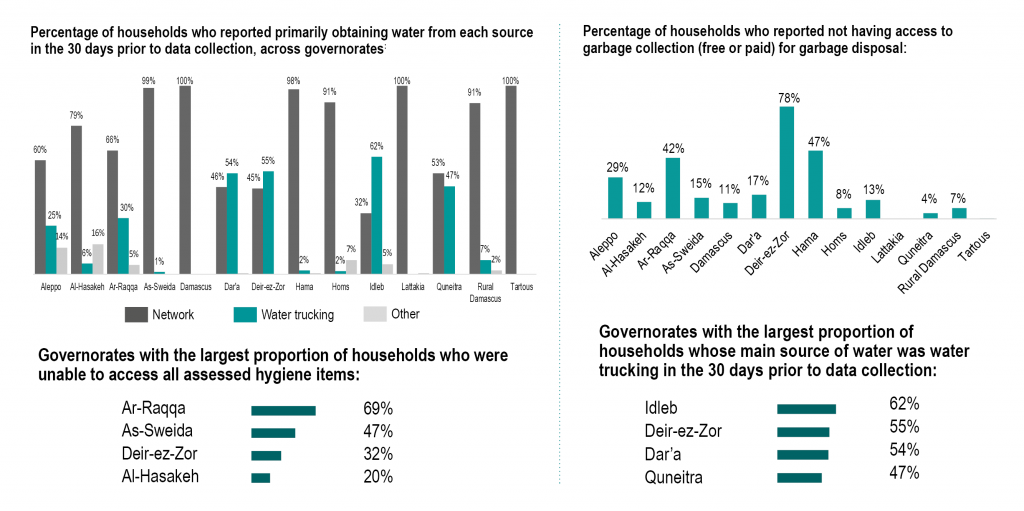
Findings from the situation overview. Have a look at the full document here.
Overall, the WASH situation overview of Syria underscores the need to improve the quality and access to drinking water and hygiene supplies across the country. As long as WASH needs remain a priority, the risk of water-borne diseases and child mortality remains high.
For a more comprehensive overview of findings from the assessments, please visit Syria’s page on the REACH Resource Centre and read the full WASH Situational Overview: Whole of Syria.

